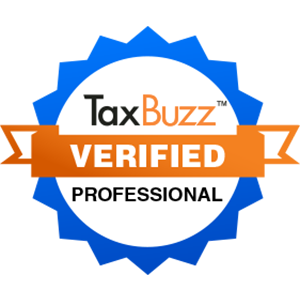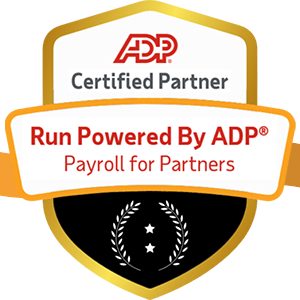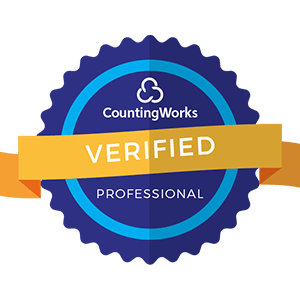
Annual performance reviews have long been a staple of the corporate world. Once a year, employees sit down with their manager, rehash the past 12 months, get some feedback, and maybe (if they're lucky) a modest raise or bonus. Then it's back to the grind until next year's review rolls around.
But this traditional model shows its age in today's fast-paced, ever-evolving workplace. Employees want more frequent feedback. They want to know how they're doing in real time, not just once a year. They want opportunities to learn, grow, and develop their skills continuously. Innovative companies are realizing that to attract and retain top talent, they need to deliver.
Enter the era of continuous performance management. Instead of saving it all up for one big annual sit-down, forward-thinking organizations are building feedback, coaching, and development into the everyday flow of work. The result? Engaged employees, agile teams, and a performance-driven culture focused on growth.

So, what's wrong with the traditional annual review? Where do we begin...
Imagine you're learning to play tennis. Would you instead get pointers from your coach throughout each practice session or wait until the end of the year for them to tell you everything you did wrong? The former is much more effective.
The same is true at work. When employees wait a year to find out what they're doing well and where to improve, that feedback is far less impactful. Minor issues have festered into significant problems. Growth opportunities have come and gone. And positive feedback loses its luster when it's no longer timely or specific.
In the typical performance review, the manager does most of the talking while the employee mostly listens. The employee may get to share a few thoughts at the end, but it's hardly a balanced dialogue.
This one-way dynamic must include employees' valuable performance, aspirations, and needs insights. It treats them as passive feedback recipients rather than active agents in their development. And it often leaves them feeling unheard and disempowered rather than supported and motivated.
In many organizations, goal setting happens separately from performance reviews. Objectives are discussed once at the beginning of the year and then put on the back burner until review time. There needs to be a greater sense of ongoing progress and opportunities to recalibrate as circumstances change.
This lack of continuity between goal setting, feedback, and development creates a fragmented employee experience. They need a clear direction or a consistent growth path.
Let's face it: annual reviews are a massive waste of time. Managers often spend weeks or months gathering input and preparing for these marathon meetings. Employees stress out over how they'll be rated and whether they'll get a raise. HR runs around ensuring everyone's doing their paperwork.
And for what? One anticlimactic meeting where the focus is more on checking boxes than meaningful dialogue. No wonder a poll by Adobe found that 22% of employees would rather watch paint dry than undergo a performance review.

The annual review is not cutting it anymore. But what's the alternative? Enter continuous performance management.
As the name suggests, this approach integrates performance management into the everyday rhythm of work through ongoing feedback, coaching, and development. Rather than a once-a-year event, it becomes a continuous process woven into one-on-ones, team meetings, and daily interactions.
While it takes different forms in different organizations, continuous performance management typically involves:
When done well, this ongoing approach offers significant upsides for employees, managers, and the business as a whole:
More Meaningful Feedback Continuous feedback is inherently more timely, relevant, and actionable. When employees get input in real-time, they can course-correct and improve much faster. Positive feedback hits home more powerfully, and developmental feedback feels more like support than criticism.
Greater Employee Engagement When employees feel heard and supported continuously, they're naturally more engaged. They know their contributions are seen and valued, and they feel empowered to keep growing and stretching.
Stronger Coaching Relationships In a continuous model, managers shift from being judges to being coaches. They're having frequent, forward-looking conversations with employees centered on growth. Over time, this builds greater openness and trust, paving the way for more candid dialogue and better results.
More Agile Goal-Setting Annual goal-setting often produces vague, immeasurable objectives that get stale as the year progresses. Continuous performance management favors shorter-term goals that can be adjusted as business needs evolve. This agility helps employees focus on the highest-impact priorities while responding nimbly to change.
Better Talent Decisions With more data points throughout the year, managers and HR have richer input to guide talent decisions around promotions, succession planning, development investments, and more. Decoupling compensation from the performance dialogue also leads to more open, growth-focused conversations.

Sold on the benefits but need help figuring out where to begin? Here are some tips for making the switch:
Educate Managers and Employees. Start by making a compelling case for change. Share the "why" behind continuous performance management and paint a picture of what it will look like in your organization. Provide training for managers on how to give effective feedback and have quality coaching conversations.
Start Small and Build Don't feel you have to revamp everything overnight. Start with a few essential practices like implementing regular check-ins or soliciting more frequent employee input. Get those right, then add other elements over time. Focus on progress over perfection.
Leverage Technology Wisely The right tools can help enable continuous performance management by prompting frequent dialogue, capturing feedback, tracking goals, and more. But technology alone won't magically transform your culture. Be thoughtful about the rollout, and make sure the human elements are the heart of your approach.
Emphasize Psychological Safety For ongoing feedback to be effective; there needs to be a foundation of trust. Work to create a blame-free environment where employees feel safe sharing ideas, taking risks, and having candid conversations. Model vulnerability as a leader to set the tone.
Make it a Two-Way Street While much of continuous performance management focuses on employees' growth, remember the other side of the equation. Encourage employees to share feedback up the chain, both on what their manager can do better and what they need to succeed.
Still not convinced? Let's look at a couple of companies that have benefited from this approach.
Adobe was an early adopter of continuous performance management, ditching annual reviews in 2012 in favor of frequent "check-ins" between managers and employees. These informal conversations discuss ongoing priorities, recent work, development opportunities, and more. Managers are expected to have at least quarterly check-ins with each team member.
Adobe also implemented an online tool where employees can share feedback anytime, give and request feedback from anyone at the company, and track their key objectives and development. The app is designed for frequent interaction, with built-in nudges to share feedback.
Since making this shift, Adobe has seen significant gains in employee engagement, retention, and performance. Voluntary attrition has decreased substantially, and involuntary departures have increased, reflecting a positive shift in productivity. Employees report feeling more aligned with company goals and more satisfied with their growth opportunities.
Professional services firm Deloitte similarly reinvented its approach to performance management in 2015. They replaced annual reviews and complex rating systems with short, frequent "performance snapshots" focused on four future-oriented questions:
Managers answer these questions quarterly for each team member, with automatic prompts to initiate check-in conversations based on the responses. Meanwhile, employees are asked for quick input on their performance and their manager's effectiveness, creating a genuine two-way dialogue.
Deloitte has found that these simple, frequent touchpoints are far more effective than traditional reviews at driving continuous improvement. The Future of Work Trends 2020 report by Deloitte highlights real-time feedback as a key trend shaping the future of HR.
As the world of work continues to evolve at breakneck speed, one thing is clear: the traditional annual performance review is on its way out. In its place, continuous performance management is emerging as the key to building an agile, engaged, high-performing workforce.
By weaving ongoing feedback, coaching, and development into the everyday fabric of work, organizations can empower employees to bring their best selves to the table daily. They can create an authentic culture of growth where everyone is committed to continuous improvement - and has the support to make it happen.
Ready to get started? Remember, the shift to continuous performance management is a journey, not a destination. Start small, lead with empathy, and keep your focus on enabling meaningful conversations that drive performance and growth. The rest will follow.


